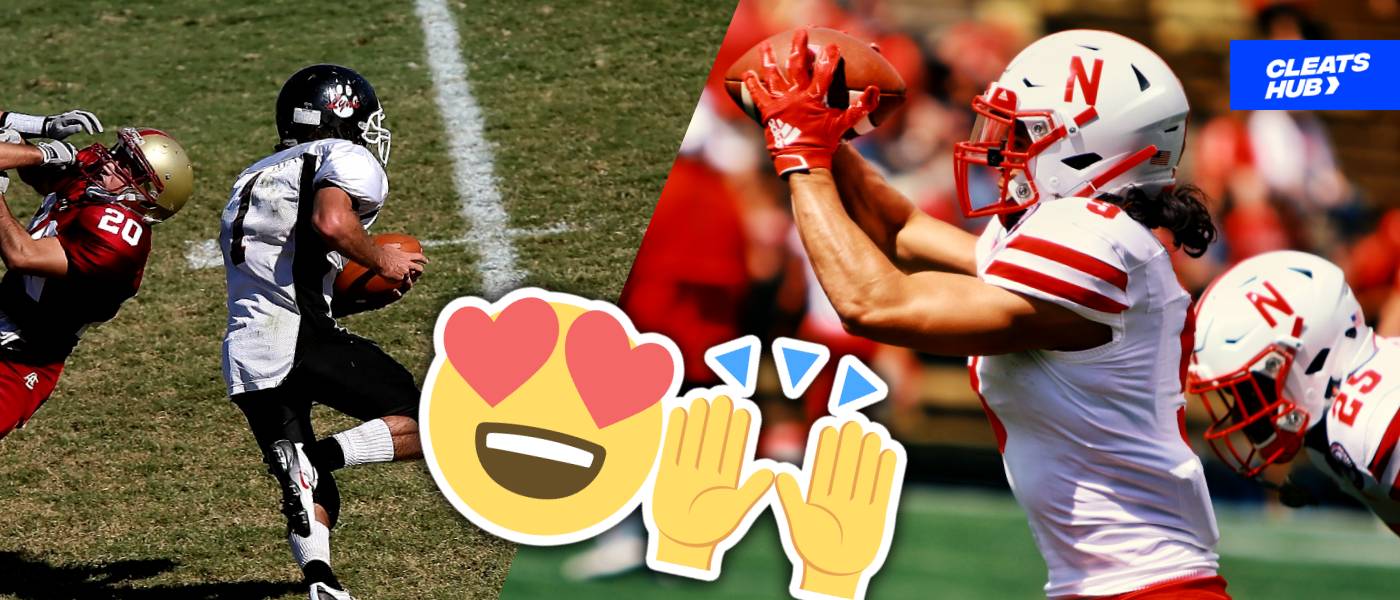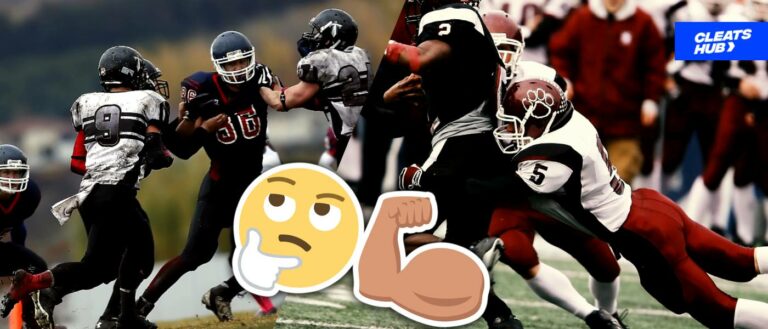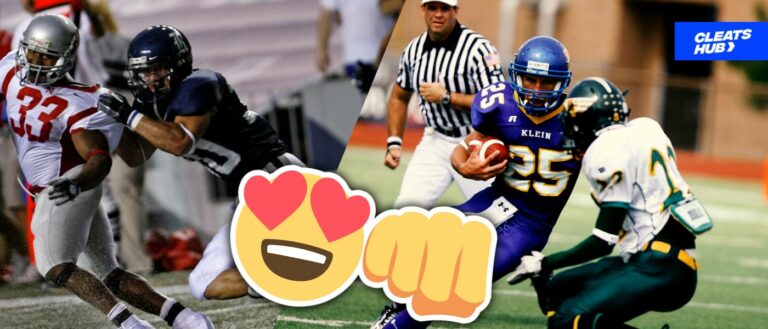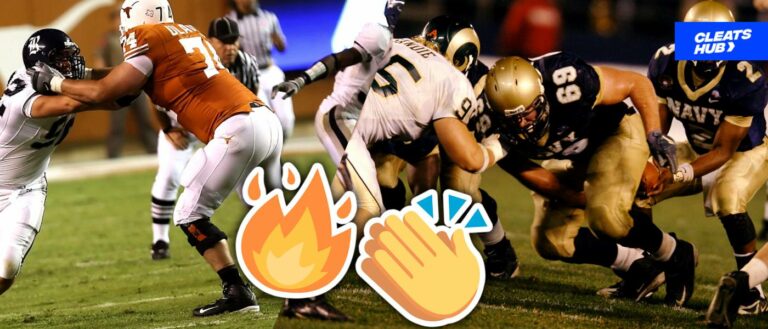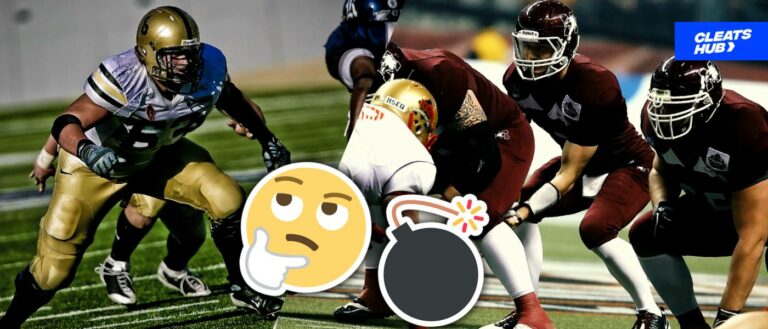What is a Punt Returner In Football? (Punt Return In The NFL)
After a punt is made by a team, the opposing team uses a player whose role is to catch the ball from the punt. This is known as the Punt Returner. Punter returners are special players on the field, and just like long snappers, punters, and kickers, they are part of the special team in football.
In this article, we will go through all you need to know about these agile and skilled players.
About Punt Returners In Football
The punt returner in football is a member of the special team responsible for catching punts from the punting team and gaining yardage on the punting team’s side of the field. Punt returners can be thought of simply as players who are made to reverse the actions of the punter for the opposing team.
Whenever a punter is called on by the punting team, the punt returner is also called on by the returning team. Just like punters, punt returners are specialists in football, therefore, they are occupied only by players who are trained to play that specific role.
What Is A Punt Return In Football?
Punt returns are instances in football when defending teams are given the opportunity to gain yardage on offense after catching the punt from the opposing team. Typically, the defending team will have the chance for a punt return when the opposing team is on fourth down and opts for a punt.
Is Punt Return Offense Or Defense?
A punt return is a chance for a defending team to switch from defensive to offensive play. Therefore, for this reason, it is considered a type of offensive play as the returning team gains yardage on offense.
How Does Punt Return Work?
Before a punt, the punt returner positions himself far back from the line of scrimmage at a point at which he believes the ball is likely to land. After the punt by the opposing team, the punt returner ensures he catches the ball before it touches the ground.
After the catch, he is faced with two major options: to call a fair catch or to go for a touchdown. Although going for a touchdown makes the perfect punt return play, it is a rare occurrence. This is because immediately after the punt, gunners from the opposing team position themselves to take out the punt returner, stopping him from gaining yardage.
Even though punter returners are unable to accomplish a touchdown, they strive to ensure they are able to gain sufficient yardage on offense.
Role of a Punt Returner

A punt returner has to receive punts that the opposing team kicks and attempt to gain yards by kicking the ball back upfield.
Following are some of the responsibilities of a punt returner:
1. Fielding Punts
The primary task of a punt returner is to catch the football after it has been thrown by the opposing team. This requires tracking the flight of the punt, determining its distance and direction, and catching it.
Second, because the returner is typically under pressure from the coverage team, punt returns can be difficult to manage.
2. Vision and Decision Making
After catching the punt, the returner must immediately scan the field and make split-second decisions. To accomplish this, you must read the coverage, identify feasible running lanes, and decide on the best course of action.
A punt returner with good vision may also see holes, anticipate blocking strategies, and capitalize on them to gain significant yardage.
3. Elusiveness and Agility
To get past the opposing team’s coverage unit, punt returners must be highly agile and elusive. To avoid tacklers and gain as many yards as possible, they use quick footwork, direction changes, and evasive moves.
The ability to make defenders miss in open space is critical to gaining extra yards and possibly shattering huge returns.
4. Ball Security
Punt returners must prioritize ball security while still aiming to make spectacular plays. A fumble can shift momentum quickly, giving the opposing side a strong field position.
Furthermore, the effectiveness of a punt returner is dependent on their ability to safeguard the football by gripping it firmly against their body.
5. Special Teams Contributions
Punt returners are commonly involved in other areas, such as kickoff returns or covering units, and are usually part of the special teams unit.
Furthermore, they are valuable team assets because of their adaptability and usefulness to special teams.
Skills Required for a Punt Returner

Football punt returners need a particular skill set, including agility, vision, decision-making, and ball-handling skills. The following are the main abilities needed for a punt returner:
1. Catching and Ball Security
It is critical to be able to receive punts and secure the football cleanly. A punt returner must have outstanding hand-eye coordination, soft hands, and the ability to concentrate in order to make a secure catch even when under pressure from advancing defenders.
It is critical to maintain appropriate ball security by tucking the ball high and snugly against the body to prevent turnovers.
2. Vision and Awareness
A punt returner must have excellent vision and field awareness to judge the covering unit and find potential rushing lanes. They must be able to scan the direction of the punt, judge the defenders’ stances, and decide where to go in a split second.
3. Agility and Change of Direction
Punt returners must be agile and have the ability to change directions quickly, which comes with quick feet. They typically have to cope with packed areas and a large number of defenders, so they must be able to make rapid cuts, juggle opponents, and dodge tackles.
Because of their agility, they can also separate themselves and cause opponents to miss in wide-open places.
4. Acceleration and Burst
Punt returners must have a burst of acceleration to reach top speed quickly and exploit gaps in the coverage unit. They should be able to run through tight areas before exploding into the open field.
To outrun pursuit angles and convert short gains into long returns, explosive speed off the line of scrimmage is required.
5. Balance and Body Control
When negotiating through traffic and altering lanes, a punt returner’s balance and body control are critical. Body control is required to avoid being tackled, spin away from it, and retain mobility in limited places.
They can also endure strikes and maintain momentum due to their remarkable balance.
Rules Governing a Punt Returner

1. Catching the Punt
A punt returner must focus on grabbing the football before situating themselves to receive a punt. If the returner drops the ball and is unable to take possession of it, the punt becomes a live ball that can be recovered by the opposing team.
As a result, high concentration and hand-eye coordination are required for a good punt returner.
2. Fair Catch
In some situations, a punt returner may choose a fair catch. The returner is given an opportunity to catch the ball without interference from the opposing team by raising one hand above their head to indicate a fair catch.
When this happens, the returner is not permitted to move the ball after the catch and is handed control of the situation.
3. Blocking and Interference
By blocking and interfering, the returner’s teammates are critical in giving opportunities for a successful return. They must block opponents deftly in order to create running lanes for the returner while avoiding punishment for improper blocks or interference.
A punt returner must be able to read and follow their blockers in order to gain the most yards from their return of a punt.
Techniques Used by a Punt Returner
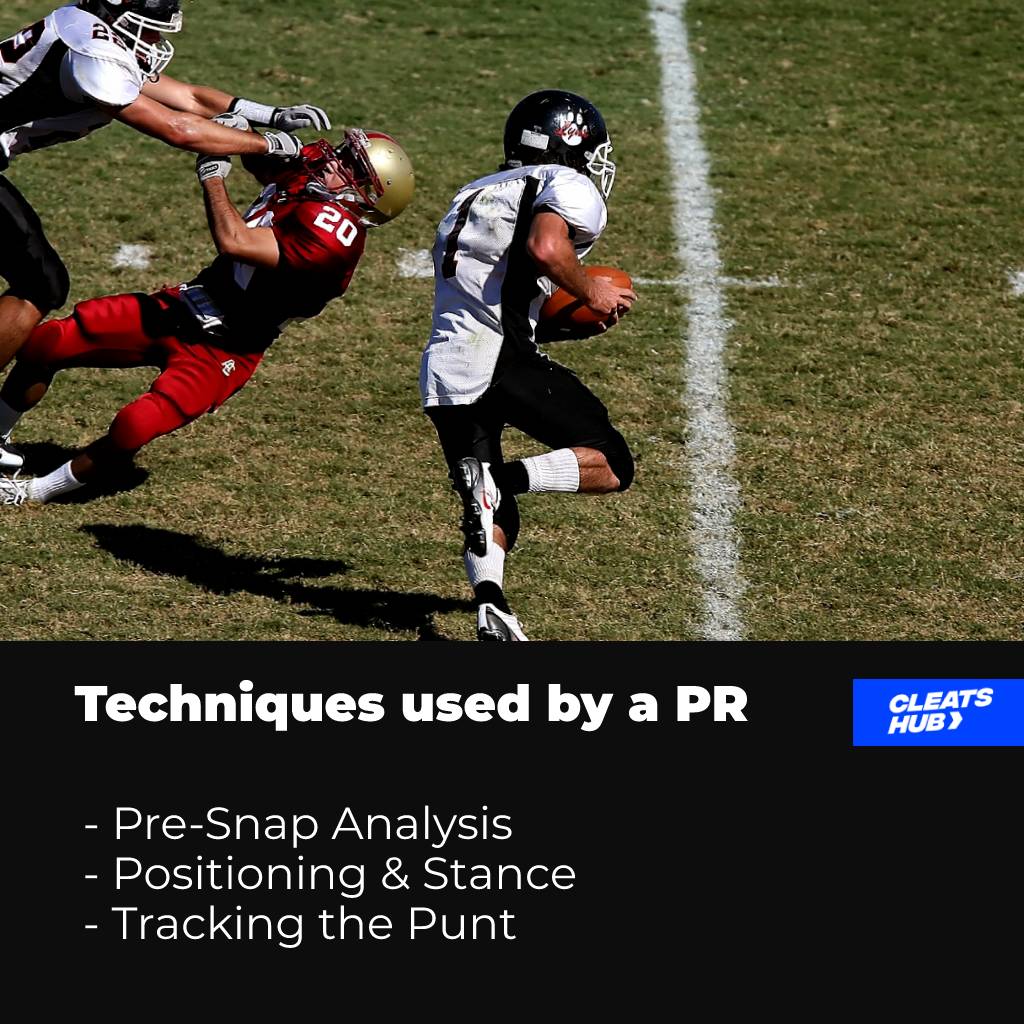
Punt returners employ a range of strategies to boost their performance and produce huge plays. These strategies combine body alignment, footwork, decision-making, and reading the coverage unit.
These are some crucial methods that punt returners employ:
1. Pre-Snap Analysis
Before the punt, the returner assesses the opposing team’s covering unit. This comprises analyzing the punter’s routines, identifying gaps in the coverage, and forecasting the type of punt (such as hang time and distance).
With the use of pre-snap analysis, the returner can also swiftly determine what to do and adjust their plan.
2. Positioning and Stance
The returner positions himself a few yards behind the line of scrimmage, taking into account the punter’s tendencies as well as the wind. Their knees are slightly bent in a balanced position, ready to jump into action at the snap of a finger.
3. Tracking the Punt
As soon as the punt is snapped, the returner focuses on following the trajectory of the ball. They quickly locate the ball and keep eye contact to ensure a clean catch.
This requires keeping an upright posture, analyzing the flight of the ball, and adjusting body placement as needed.
4. Catching Technique
With excellent catching technique, the returner easily secures the punt. Their hands are raised just over their waist, forming a diamond formation with their thumbs and index fingers.
The returner keeps their eyes on the ball, lightly absorbs the reception with their hands, and secures the football against their body to avoid fumbles.
5. Decision-Making
Based on the coverage unit’s location and pre-snap analysis, the returner must act fast once the punt is caught. They scan potential rushing lanes, evaluate defender placement, and select between making an aggressive return and asking for a fair catch.
In situations where field position is essential, the returner must be steadfast, taking calculated risks when necessary while avoiding unnecessary risks.
6. Evasive Techniques
To get around defenders and make room for themselves, punt returners employ a range of evasive strategies. Sidestepping, juking, spinning, and swiftly changing directions are examples of these moves.
Furthermore, the returner causes opponents to make mistakes and find gaps in the coverage by using quickness, footwork, and body control.
Top Punt Returners in NFL History

The following five players stand out as the best punt returners in NFL history, even though the league has had many excellent punt returners over the years.
Devin Hester
Devin Hester, widely recognized as the best return player of all time, significantly transformed the punt return game during his time in the NFL.
Furthermore, he was a constant threat to score due to his incredible ability to change direction on a dime and outrun defenders. Hester holds the record for most career punt return touchdowns with 14, earning the nickname “Anytime”.
1. Brian Mitchell
Brian Mitchell made a significant contribution to the punt return game. Mitchell’s versatility as a punt and kickoff returner was on display throughout his career.
He currently holds the NFL record for most punt return yards with 4,999 in his career and nine additional scores.
2. Desmond Howard
Desmond Howard solidified his name in football history with his spectacular performance in Super Bowl XXXI, where he became the first and only player from the special teams to win the game’s MVP award.
He has routinely astounded fans with his scorching returns and played a significant role in the Green Bay Packers’ Super Bowl victory.
Also, due to his superior vision and speed, Howard was a continuous threat to take it to the house.
3. Rick Upchurch
Rick Upchurch, the Denver Broncos’ dynamic return specialist, was a nightmare for opposing teams. Because of his agility and ability to weave through traffic, he consistently produced big plays.
Upchurch, a four-time Pro Bowler, holds the NFL record for most punt return touchdowns in a season with four.
4. Dante Hall
Dante Hall, nicknamed “The Human Joystick”, was a key player for the Kansas City Chiefs. Because of his exceptional acceleration and lateral quickness, he was one of the most dangerous returners in NFL history.
Furthermore, Hall had 12 return touchdowns in his career, including six in a single season, and football fans will remember his highlight-reel exploits forever.
Punt Returner Fun Facts
- Longest Punt Return:
Against the San Francisco 49ers in 2003, a Chicago Bears player named Nathan Vasher returned a punt for 108 yards, the longest punt return in NFL history. Vasher’s record-breaking run awed both players and spectators. - Deion Sanders, the Double Threat:
Deion Sanders was a great punt returner in addition to his outstanding cornerback ability. Because of his proclivity for producing big plays, he was a true double threat on the field. - Punt Return Expert Position:
Several athletes specialize in punt returns. These specialists bring specialized skills to the squad, focusing their efforts on gaining the most return yards possible. They may have a substantial impact on the outcome of a game.
Conclusion
Punt returners provide the game with an element of excitement and unpredictability. They have a special set of abilities that allow them to avoid tacklers, switch fields, and enthrall the crowd with their daring sprints.
So, be ready to watch a breathtaking display of speed, agility, and sheer chutzpah the next time you see a punt returner sprint down the field.

